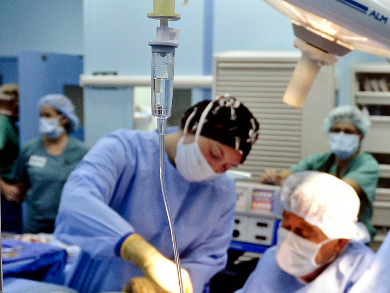Cells strongly depend on their surroundings: Many cellular events are regulated by the interaction of receptors in the cellular membrane with various substances in the extracellular matrix (ECM), such as glycoproteins and polysaccharides. Unfortunately, polyester wells used for cell cultivation in vitro do not feature an ECM, limiting their applications in tissue engineering.
Cleo Choong, Nayang Technological University, Singapore, and colleagues used adipose tissue from lipoaspirations to extract ECMs for cell cultivation. Their purely physical method of homogenization, ultrasonification and centrifugation yields to ECM without the need of chemicals. The resulting lipoaspirate-derived ECM (LpECM) is covalently linked onto polycarolactone (PCL) wells using surface-initiated atom transfer radical polymerization (ATRP). The successful linkage to the polyester surface is verified by atomic force microscopy (AFM) and X-ray photoelectron spectroscopy (XPS).
LpECM-coated wells exhibit excellent cell attachment, proliferation and a high survival rate in biological tests with adipose tissue stem cells. The isolation of ECM from surgical waste material could, therefore, be a highly useful technique for tissue engineering.
- From Flab to Fab: Transforming Surgical Waste into an Effective Bioactive Coating Material,
Baiwen Luo, Shaojun Yuan, Selin Ee Min Foo, Marcus Thien Chong Wong, Thiam Chye Lim, Nguan Soon Tan, Cleo Choong,
Adv. Healthcare Mater. 2014.
DOI: 10.1002/adhm.201400514




